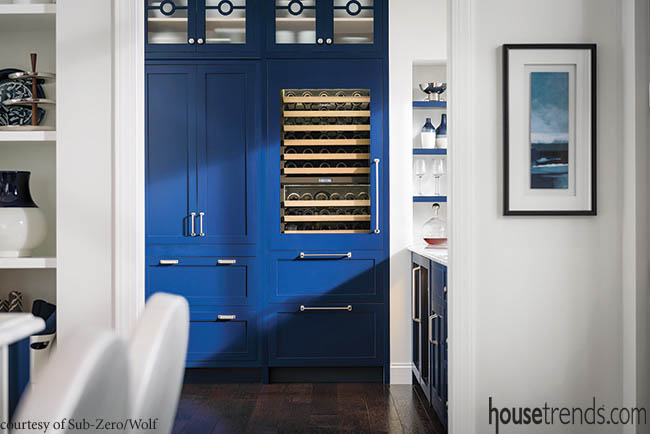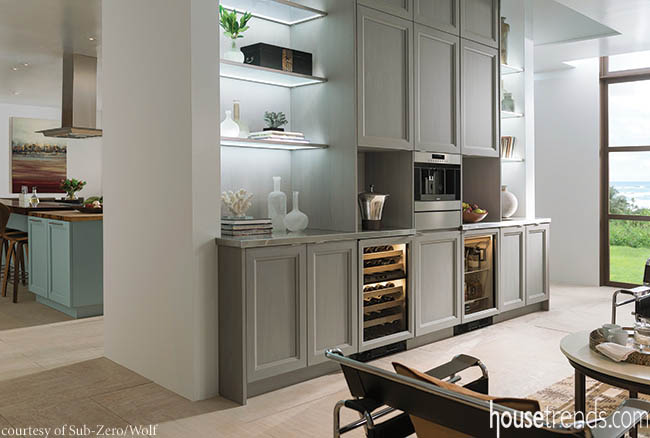Wine is a significant investment and traditionally kept locked away in a lower level cellar. But today, more connoisseurs are considering ways to incorporate wine into their kitchen design ideas. The experts at Sub-Zero say there are four “enemies” of wine of which even the most casual wine drinker should be aware when deciding how to store wine for aging, or for later enjoyment. The following enemies are listed in order of the harm they can cause:
- Temperature has the biggest potential impact on wine storage. Ideally, wine of any type should be stored around 55 degrees. As wine ages, complex chemical changes occur. When the temperature of wine is warmer than ideal, chemical changes can occur faster than desired. This acceleration of the aging process leads to wine peaking in quality earlier than expected, and declining faster thereafter.
- Ultraviolet light exposure breaks down compounds in the wine producing undesirable tastes and odors. Darkness is the ideal lighting condition for storing wine.
- Humidity levels that are too low can cause the cork to dry out, allowing wine to leak out and let air in, which leads to oxidation of the wine. Humidity levels that are too high can allow mold to grow on the cork and label or even cause the labels to completely disintegrate.
- Vibration causes sediment from the bottom of the bottle to circulate, reacting with the wine and producing off-flavors.


